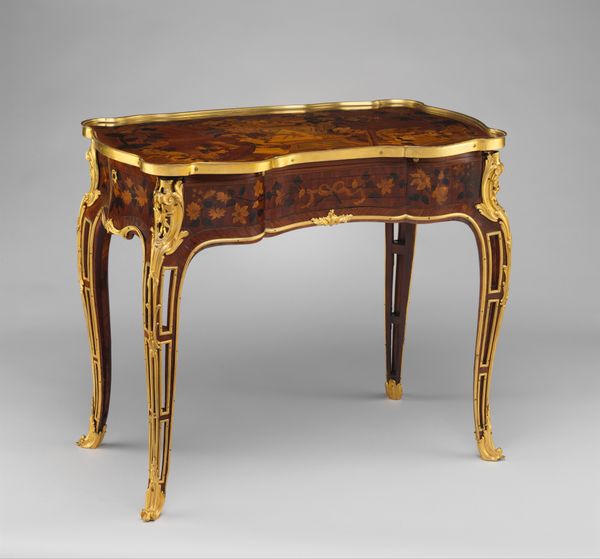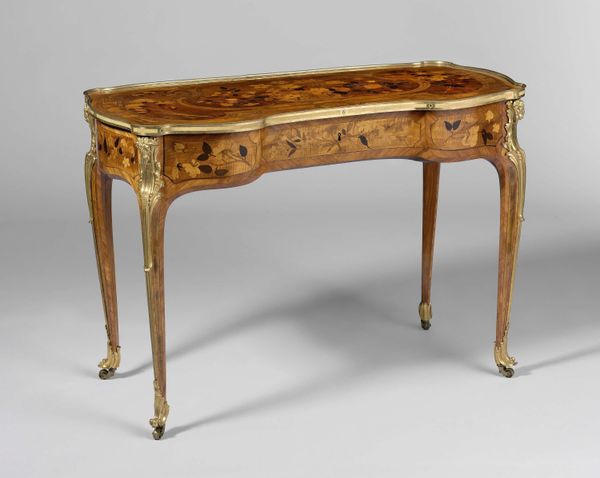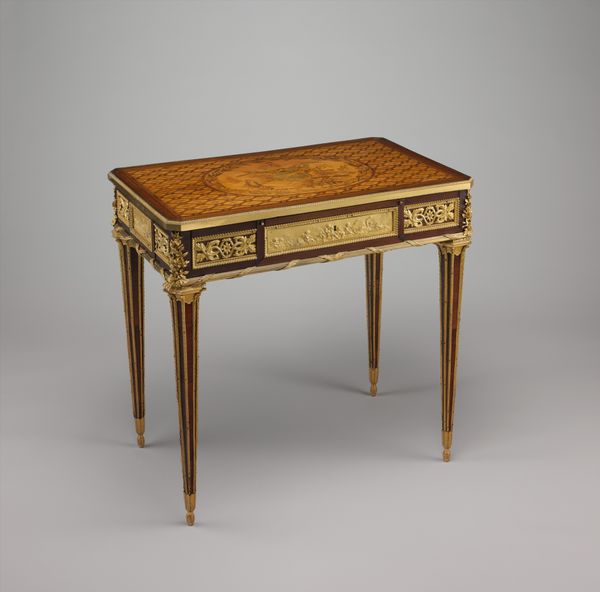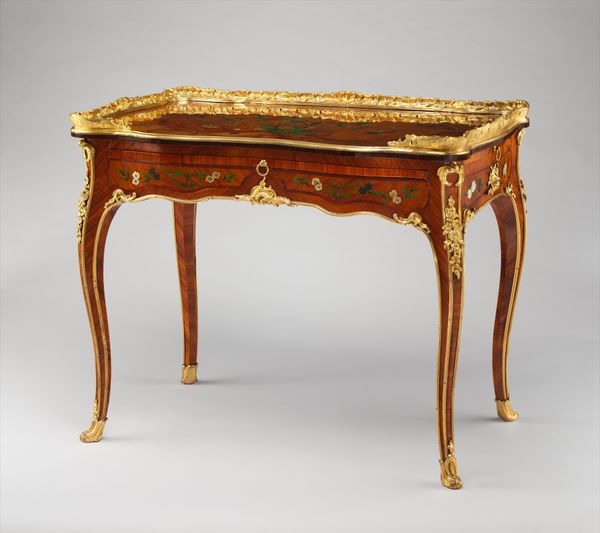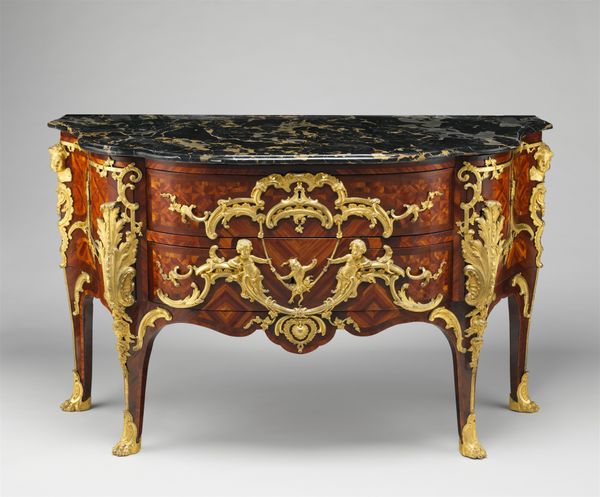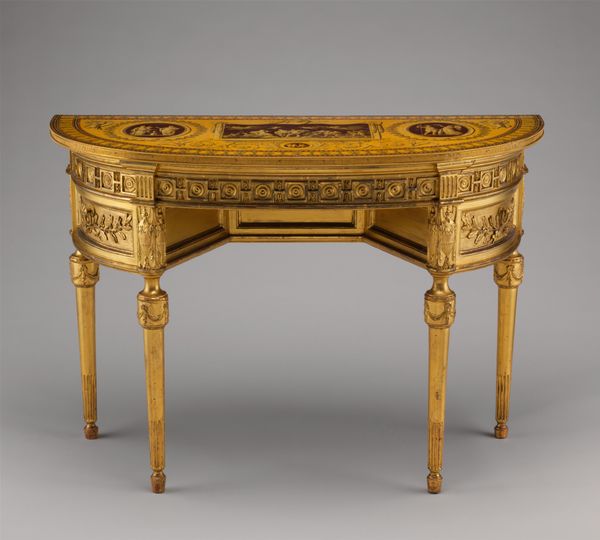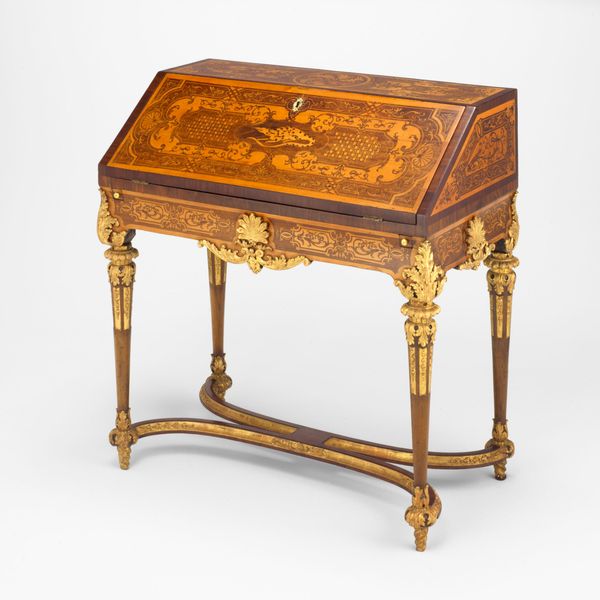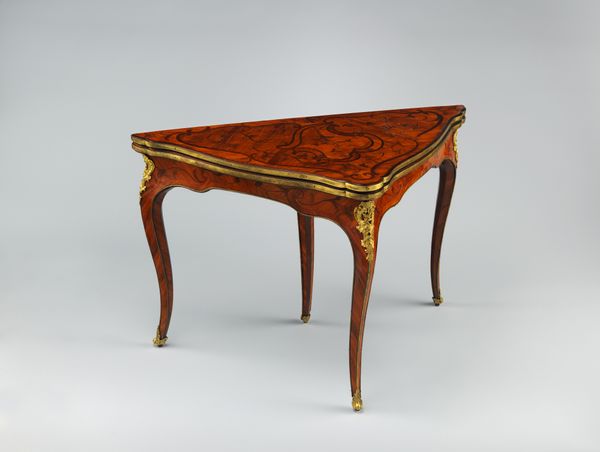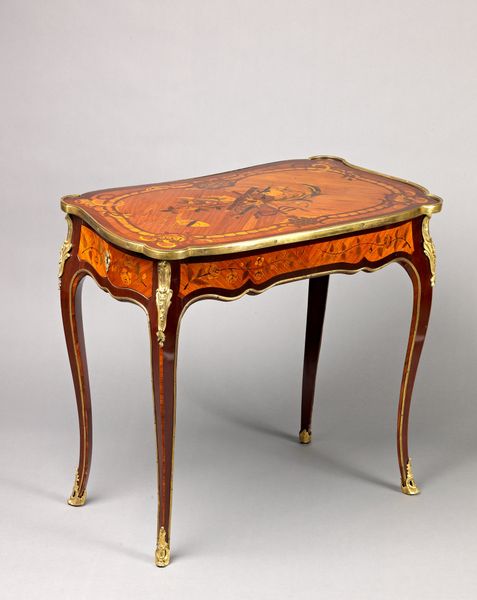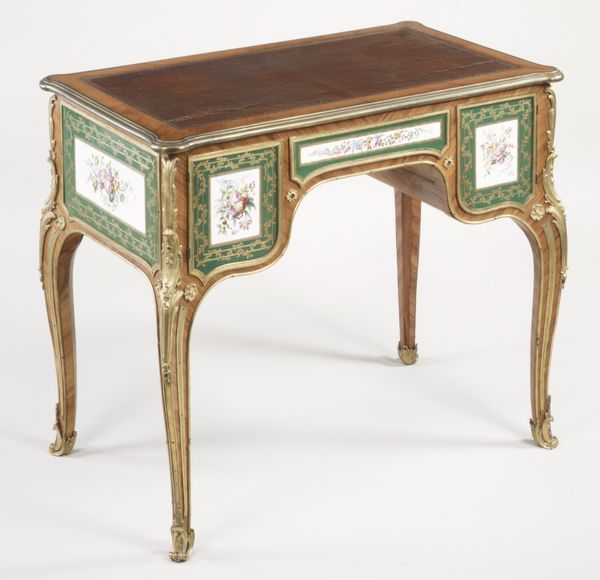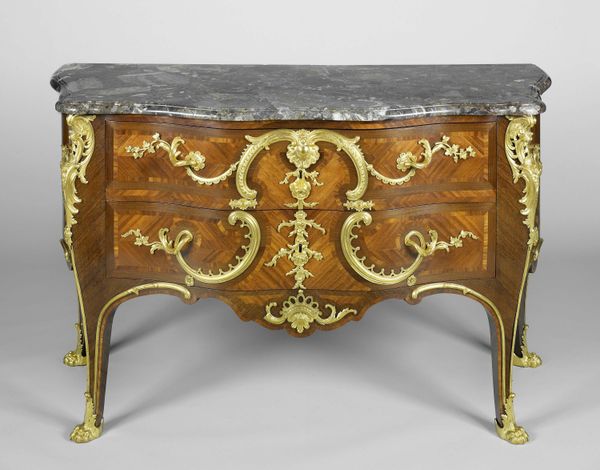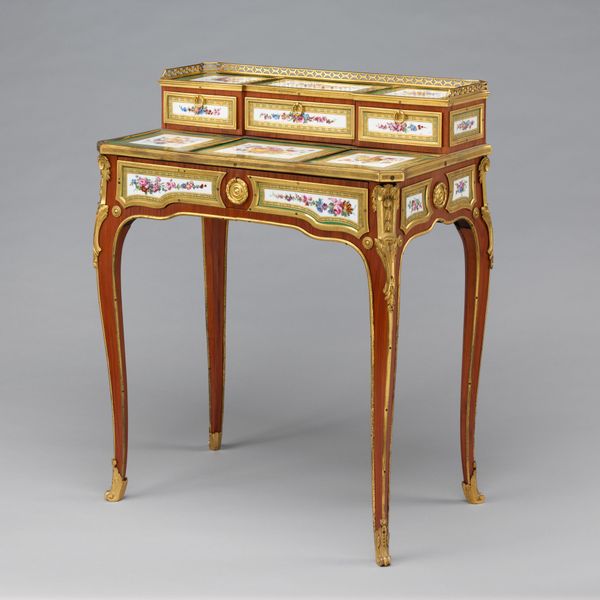
carving, wood
#
wood texture
#
carving
#
intimism
#
wood
#
decorative-art
#
rococo
Dimensions: height 74.8 cm, width 85.5 cm, depth 41.0 cm, width 85.5 cm, depth 41.0 cm
Copyright: Rijks Museum: Open Domain
Editor: This is Jean-François Oeben's "Writing and Dressing Table," made sometime between 1762 and 1768. The craftsmanship is astounding, it’s all wood and carving! It looks so delicate, almost as if it's waiting for someone to sit down and write a love letter. What secrets do you think this table holds, and what do you make of this level of ornamentation? Curator: Oh, my dear, secrets! Every ripple in that wood, every carefully placed floral inlay whispers stories. Imagine the hands that have touched it, the thoughts that have been penned on its surface. The Rococo loved a flourish, didn’t they? A reaction against the somber piety of the preceding era. To me, it’s all about intimacy—a space for whispered confidences and private reflections. Do you think it invites or intimidates? Editor: That's a great question. I think it's both! The ornamentation is intimidating, but the size invites closer inspection. Do you see a lot of that tension in Rococo art in general? Curator: Precisely! A dance between opulence and the personal. Think of Fragonard’s playful scenes, or Boucher’s soft pastels. They aimed to delight, but there's often a layer of something deeper underneath, wouldn't you agree? That pursuit of fleeting pleasure tinged with a awareness of life's ephemerality. Editor: I do! It makes you wonder about the people who interacted with objects like this daily. I will definitely think more deeply about this style! Curator: It's like glimpsing into the lives of those who dreamt and lived surrounded by such beauty. Consider this piece a starting point—a keyhole into a fascinating era.
Comments
rijksmuseum about 2 years ago
⋮
After Oeben died, his widow continued his workshop: guild regulations allowed her to keep using her dead husband’s name stamp. The workshop was headed by Riesener, who married Oeben’s widow in 1767 and became a master cabinetmaker a year later; he then began to use his own stamp. The underside of this table bears both stamps, indicating that Riesener at least completed it.
Join the conversation
Join millions of artists and users on Artera today and experience the ultimate creative platform.
